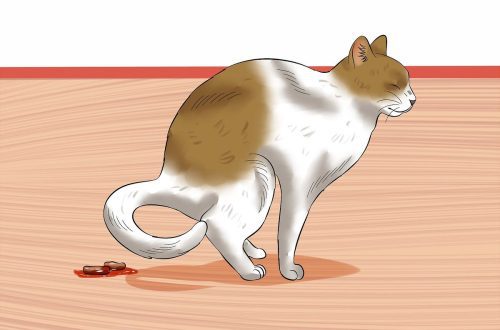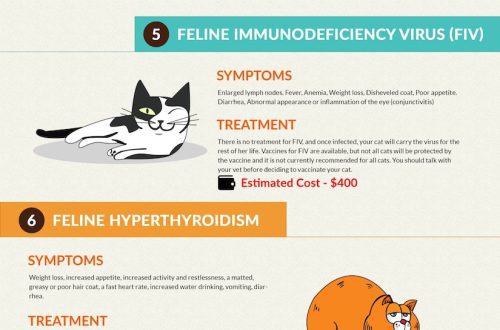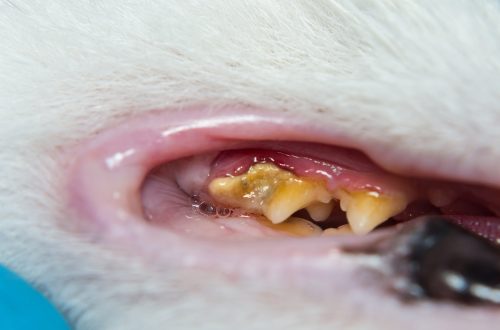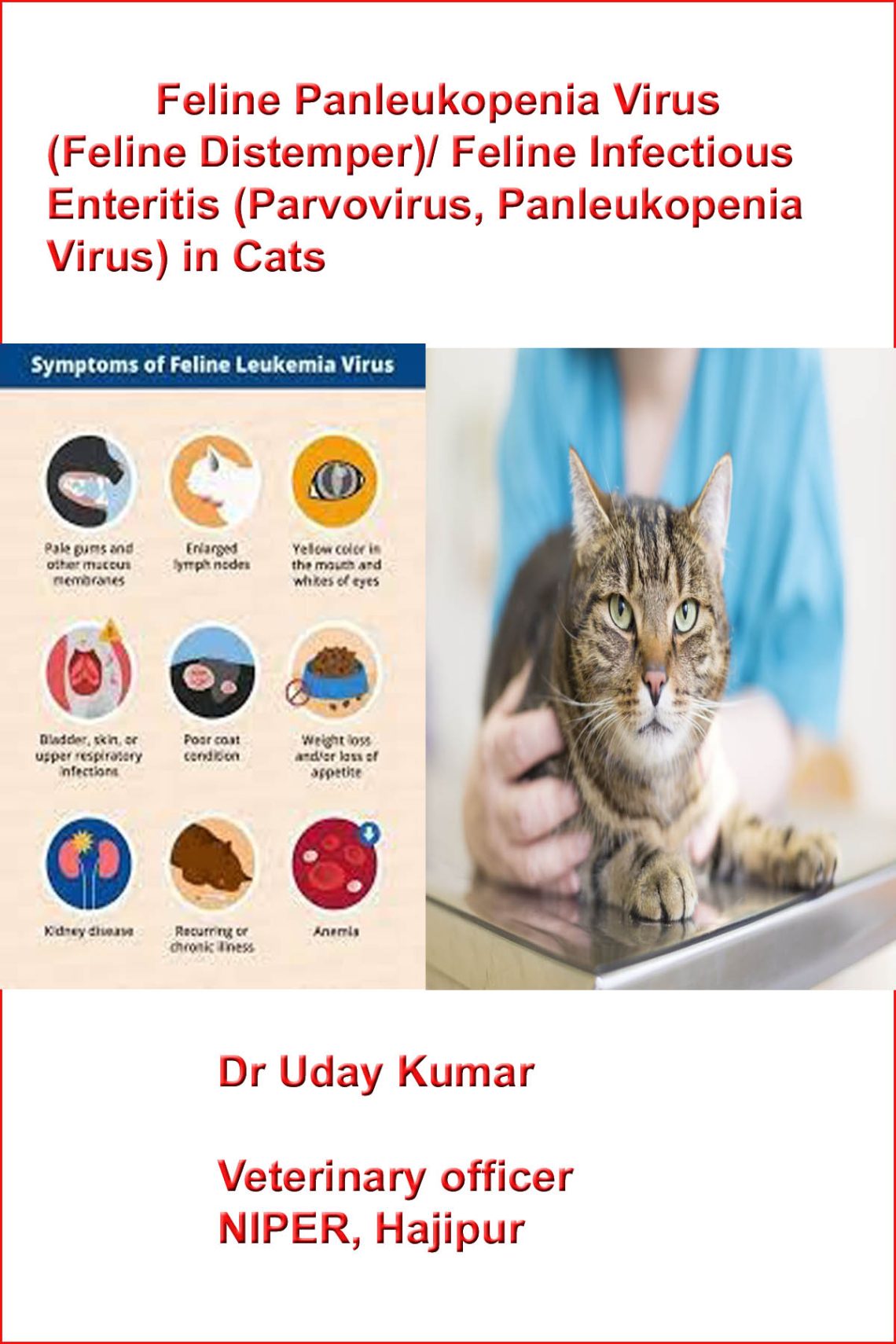
Parvovirus in the cat
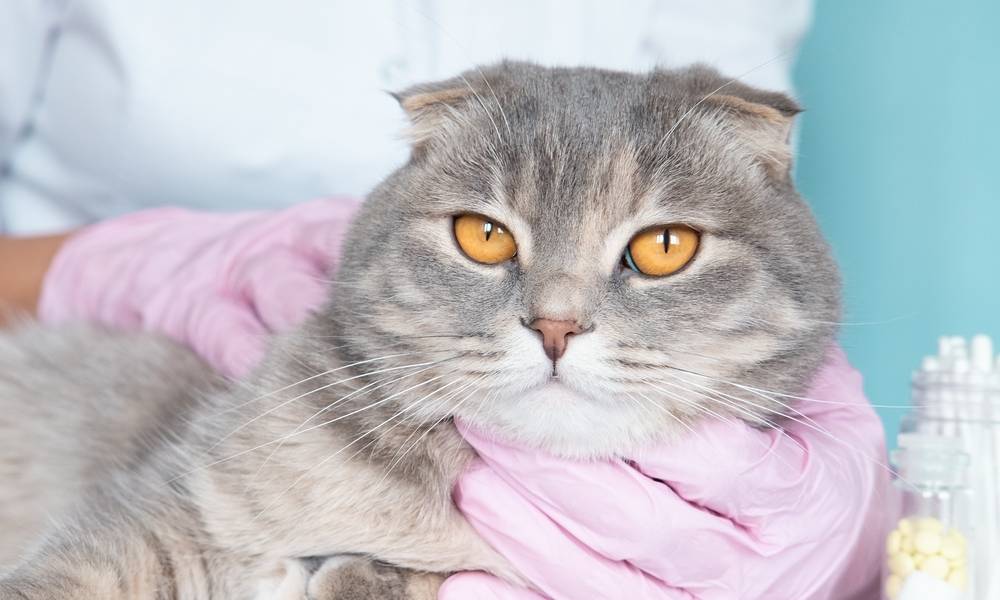
Contents
Oh parvovirus
Parvovirus is a DNA virus. Despite the conditional division of parvoviruses according to the animal species from which they were originally isolated, it should be noted that feline parvovirus (FPV) can also be infectious for other animals, such as dogs. And one type of canine parvovirus (CPV-2) is contagious to cats, but more likely to cause milder disease than FPV.
How do cats become infected with parvovirus?
The virus is transmitted through the feces of a sick animal. It is also possible intrauterine infection of the fetus from the mother.
The persistence of the virus leads to its persistence and accumulation indoors and on household items, so infection is possible even without direct contact with a sick animal or its feces.
Once in the body, parvovirus affects all organ systems. Since the virus needs actively dividing tissues for successful reproduction, it affects, first of all, intestinal cells, leading to its inflammation – enteritis, and also affects the lymph nodes and red bone marrow, causing a decrease in immunity and leading to leukopenia – a decrease in all leukocytes ( immune cells) in the blood. Hence the name of the disease that causes feline parvovirus in cats – panleukopenia.
Conventionally, the course of parvovirus can be divided into the following forms:
- Systemic infection – the main form of the disease. It is characterized in cats by severe parvovirus enteritis, a decrease in immunity, anemia (a decrease in red blood cells and hemoglobin in the blood).
- Combined infection. When complicated by other pathogens: for example, coronavirus, calcivirosis. In this case, the disease is more severe. Also, with parvovirus enteritis, cats often develop a secondary bacterial infection.
- intrauterine infection. If the infection of the cat occurred in the early stages of pregnancy, then the death of the fetus is most likely, followed by miscarriage or resorption (resorption). In late pregnancy, the virus leads to underdevelopment of the fetal brain region – the cerebellum. Such kittens will have congenital problems with coordination.
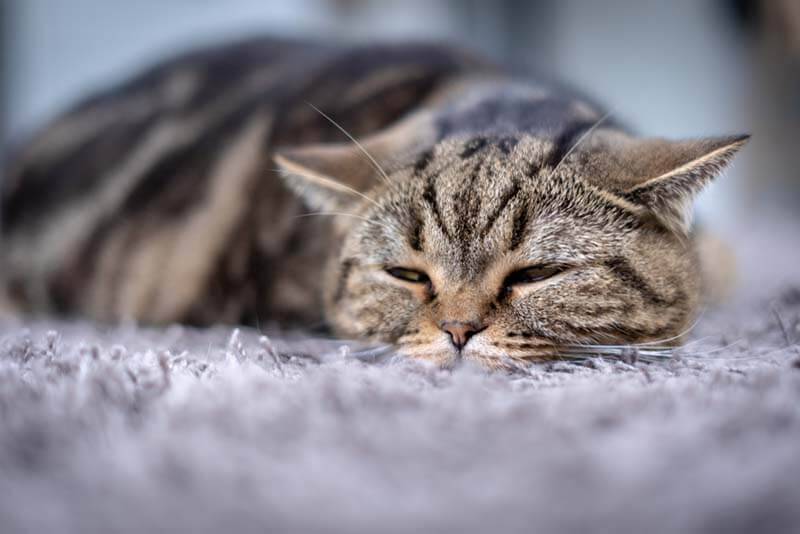
Risk groups
Unvaccinated young animals are most susceptible to infection. Also at risk are pets with reduced immunity and chronic diseases. Most often outbreaks of parvovirus are observed in places where animals are kept crowded: shelters, nurseries with a low level of vaccination. But any cat can become infected, even living alone and not having access to the street.
Symptoms of parvovirus in cats
The most common symptom of parvovirus in cats is vomiting. In most cases, the animal immediately refuses food and water. Other common symptoms are: fever, diarrhea, abdominal pain, depression.
Against the background of vomiting, lack of appetite and decreased thirst, the cat quickly becomes dehydrated.
Often the animal can sit over a bowl of water for a long time. You can also note the pallor of the mucous membranes, increased salivation, rapid breathing. With diarrhea, feces may be watery, with mucus and blood. A fulminant course of infection is possible, when the animal dies in less than a day.

Diagnostics
One of the very characteristic signs of infection is a decrease in leukocytes in the blood – leukopenia. It can be seen in a general clinical blood test, it also evaluates signs of anemia. To more accurately confirm the diagnosis, rectal swabs or feces of a sick cat are examined for the pathogen using rapid tests (common in veterinary clinics) or PCR (in a special laboratory).
It is important to note that the PCR method is very sensitive and can detect the virus in faeces even from a cat that has been ill. It can also “catch” the vaccine virus within a few weeks after the use of a live panleukopenia vaccine. For this reason, the results of specific studies are always considered by the doctor in conjunction with the symptoms.
In addition to the above diagnostics, an ultrasound examination of the abdominal cavity can be performed, this is especially important if a complication of parvovirus infection in cats is suspected – intestinal invagination, when one part of the intestine enters another.
A blood test for electrolytes, albumin, and glucose is also required.
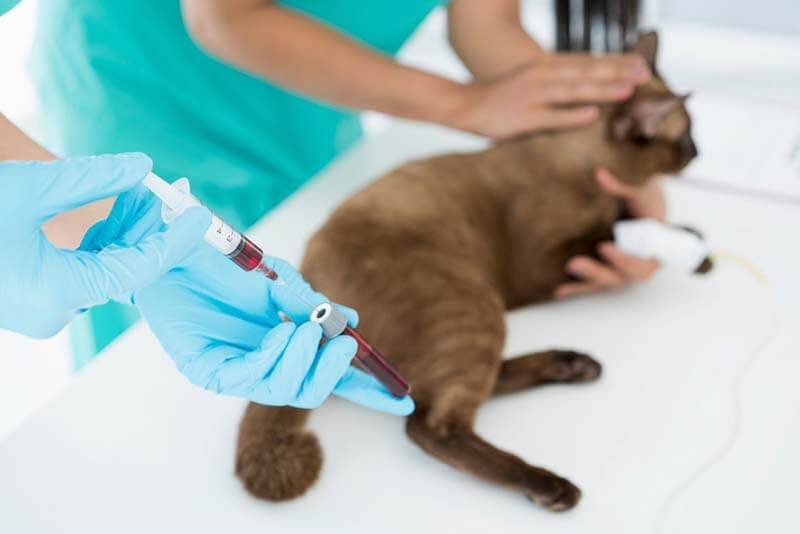
Treatment of parvovirus enteritis in cats
Often, the treatment of parvovirus in cats is stationary. In severe cases, the animal requires round-the-clock supervision by a veterinarian. Also, hospitalization isolates the patient.
In adult vaccinated pets with a mild course of the disease, treatment can be carried out in a day hospital or at home.
One of the most common causes of death of an animal with parvovirus will be rapid dehydration and sepsis. Therefore, a mandatory component of therapy is fluid replenishment with the help of infusions (droppers) with special solutions and the appointment of antibiotics to prevent bacterial infection.
In addition, antiemetic drugs are needed, most often Maropitant or Ondansetron are used for this.
Gastroprotective (antiulcer) agents and vitamins (for example, group B) are also used.
Occasionally, an animal may need a blood transfusion, such as when there is significant anemia, or a plasma transfusion when there is a severe drop in blood proteins.
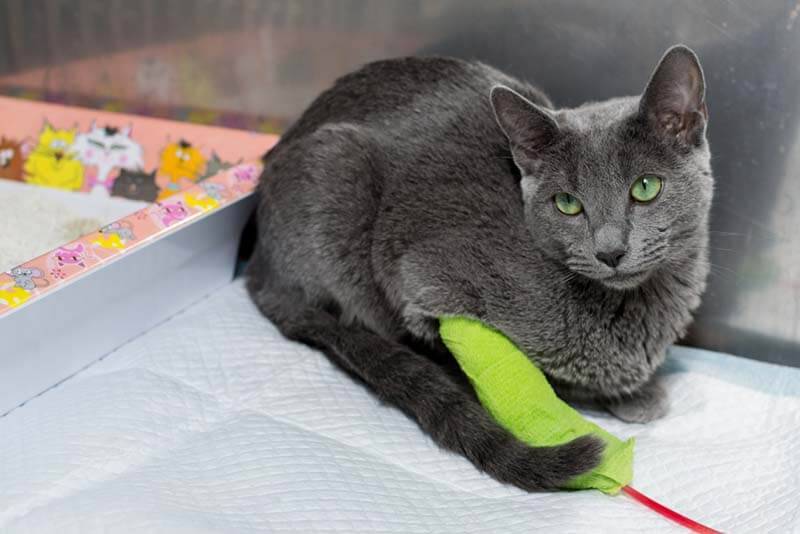
Food
Despite the severe damage to the intestines by the virus, it is important to start feeding sick animals as soon as possible. And as soon as vomiting is under control, the cat begins to be fed special diets with high energy value and good digestibility. The first portions of food should be small and offered as often as possible.
Cats recovering from parvovirus enteritis should receive an easily digestible diet. This can be achieved by using prepared industrial feeds intended for recovery, or diets for animals with intestinal diseases. The period of application of a specialized diet depends not only on the severity of the course of the disease, but also on a number of other factors: the age of the patient, the speed of recovery, the presence of a history of chronic diseases, and so on.
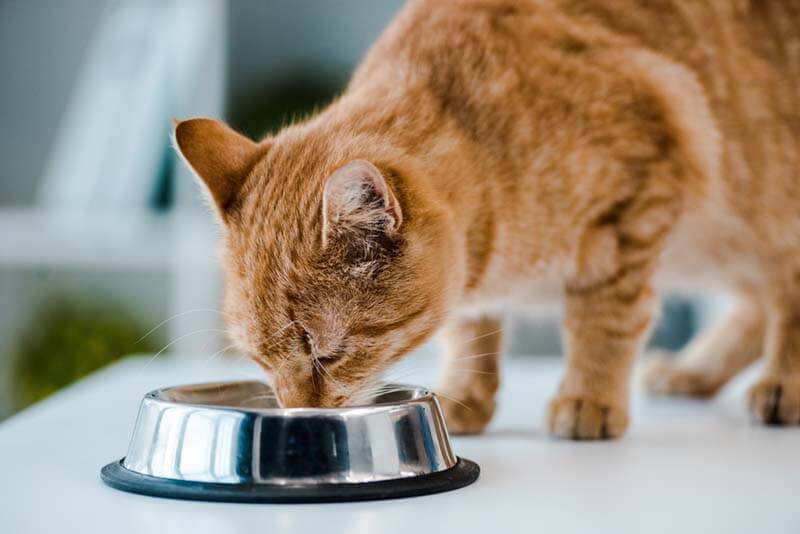
Parvovirus in kittens
Kittens are at risk for both parvovirus infection and severe disease. This is especially true for unvaccinated animals and kittens born to mothers with low immunity to parvovirus, as well as those kittens that were fed artificially from birth.
Due to vomiting, diarrhea, inability to eat and drink, kittens lose fluid very quickly, very often they experience hypoglycemia – a critical decrease in blood sugar. Even with timely intensive care, mortality among kittens is high and can reach up to 90% among unvaccinated individuals.
Kittens born to mothers who have been ill late in pregnancy or have been vaccinated with a live parvovirus vaccine may have congenital cerebellar disease.
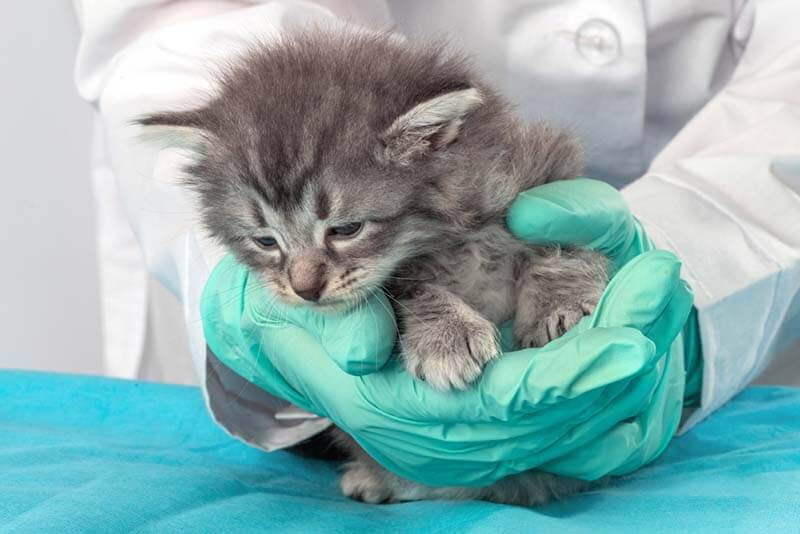
Prevention
Prevention of parvovirus can be divided into several points:
- Mandatory vaccination of all animals against parvovirus.
- Pregnant cats and small kittens should be kept separate from other individuals.
- Mandatory quarantine of suspicious animals, as well as new animals.
- Careful processing of inventory and premises where sick animals were kept.
- Separately, one can single out the use of ready-made (industrial production) or home-made hyperimmune sera, which contain antibodies to parvovirus. Ready-made sera are obtained from the blood of large or small cattle and horses, and home-made sera are obtained from the blood of ill or vaccinated cats. Similar sera according to the literature may be effective as a preventive measure before the onset of clinical signs. The animal must not be vaccinated 3-4 weeks after serum application.
Vaccination
Newborn kittens are protected by maternal antibodies, but gradually the level of this protection decreases, and at 8-9 weeks the kitten should receive the first vaccine against parvovirus. The most commonly used so-called live vaccines with weakened virus. They allow you to get a faster and stronger immune response.
A booster vaccine is given after 3-4 weeks, and then a third dose after another 3-4 weeks is desirable, as in some animals maternal protective antibodies can persist up to 16 weeks and prevent a good immune response to vaccination.
Revaccination is carried out approximately one year after the initial injections, then annually at high risk of infection (there are many cats in the house or they have access to the street) or once every 3 years at low risk (the animal is kept only at home, does not come into contact with other animals).
If it is necessary to vaccinate pregnant cats or cats with significantly reduced immunity, inactivated vaccines with a killed virus are used.
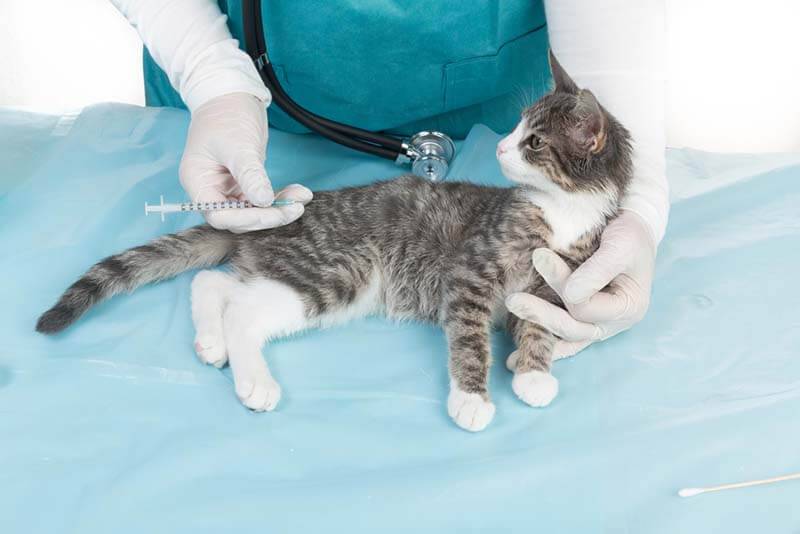
Processing locations
The stability of parvoviruses in the external environment makes disinfection one of the important points in the prevention of infection. The following methods are used for processing:
- Thorough general cleaning of the entire premises, furniture and equipment.
- Applying disinfectants to all surfaces, as well as processing equipment with it: trays, cages and other things. Most often, a solution of bleach (household chlorine-containing products) is used in a ratio of 1:32. Before applying the solution to the surface, make sure that it is resistant to its effects.
Is there a danger to humans
Parvovirus infection is often severe in cats and other animals, and some virus subtypes can “jump” from one host to another. However, parvoviruses that infect animals do not pose any danger to humans and are not contagious to humans.
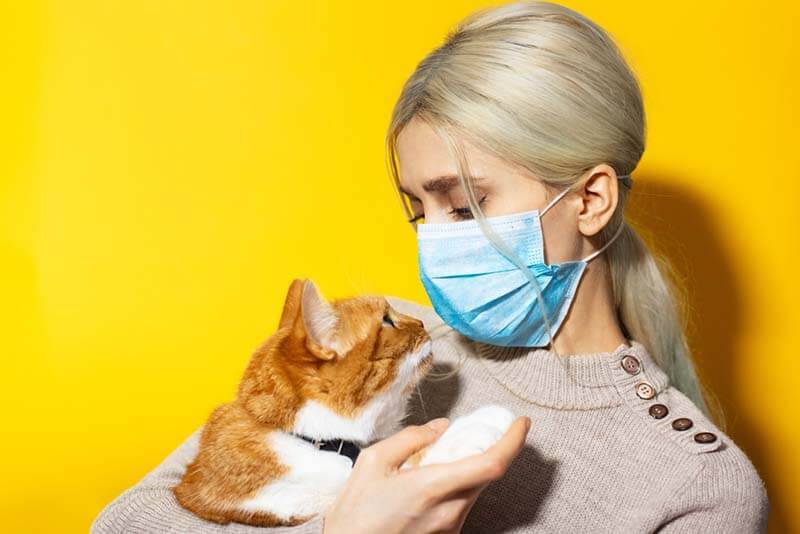
Parvovirus Enteritis in Cats: Essentials
This is a severe viral disease with a high mortality rate in unvaccinated animals, especially kittens.
The main symptoms will be: vomiting, refusal of food and water, fever, diarrhea, depression.
Often a sick animal requires intensive treatment in a round-the-clock or day hospital.
Parvovirus is stable in the environment. Can be stored indoors for several months.
The disease is very contagious and even animals that are kept at home alone and do not have access to the street are susceptible to it.
The most reliable method of protecting a cat from parvovirus infection is vaccination.
Answers to frequently asked questions
Sources:
Katrin Hartmann. Feline Panleukopenia //Ресурсwww.abcdcatsvets.org, 2017 г. http://www.abcdcatsvets.org/abcd-guidelines-on-feline-panleukopenia-2012-edition/#Feline%20Panleukopenia%20control%20in%20specific%20situations
Craig E. Greene. Infectious dieseases of the dog and cat, fourth edition, 2012
Edited by Gary D. Norsworthy. The feline patient, fifth edition, 2018
Vaccination Guidelines for Dogs and Cats // Resource www.wsava.com, 2016 https://wsava.org/wp-content/uploads/2020/01/WSAVA-vaccination-guidelines-2015-Russian.pdf
April 11 2022
Updated: April 11, 2022



